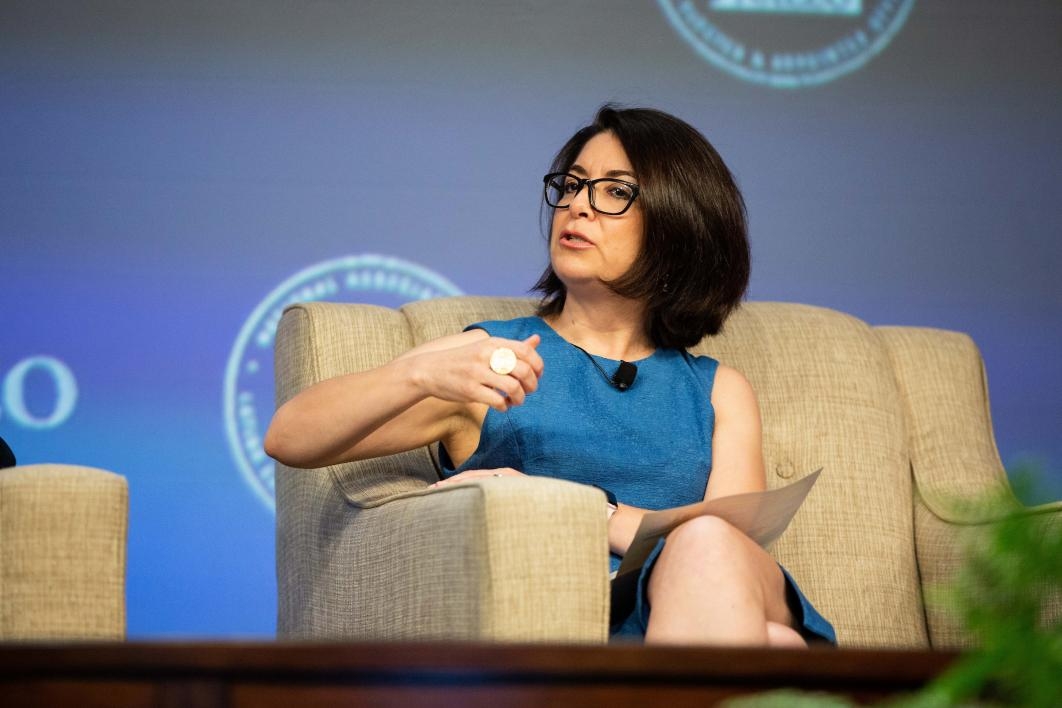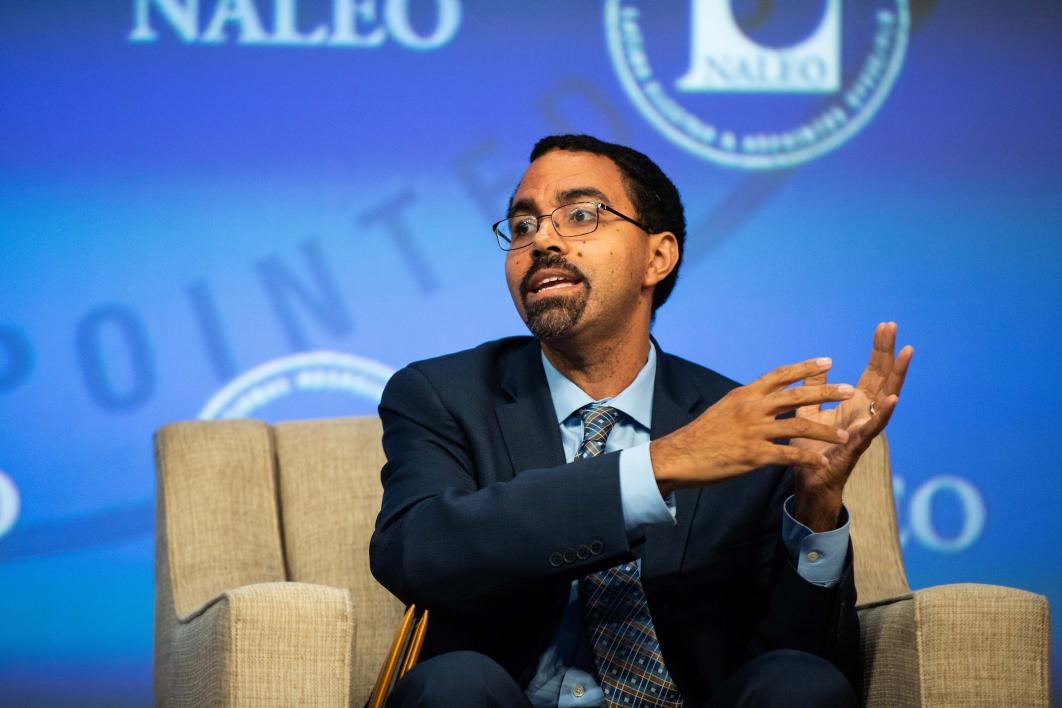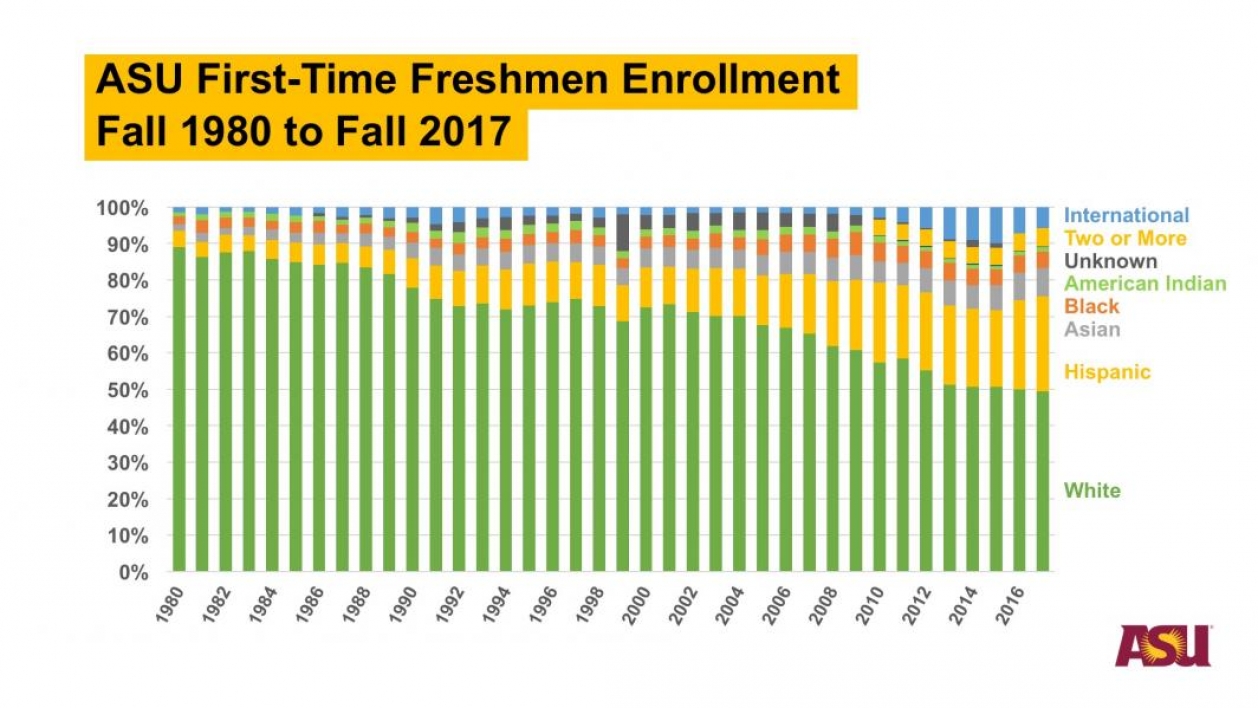Hispanic college-degree attainment must increase to drive economy, Crow says

The United States will never reclaim its position as the world’s top economic superpower unless more Hispanic people earn college degrees, according to Michael Crow, president of Arizona State University.
Currently, the higher-education attainment gap between Hispanic people and the total U.S. population is too wide and likely to increase unless radical changes are made, Crow said at a presentation to the annual conference of NALEO on Friday. The National Association of Latino Elected and Appointed Officials is a nonprofit, nonpartisan organization that advocates for Latino participation in the American political process.
About 34 percent of the overall adult population has a bachelor’s degree, compared with about 17 percent of Hispanic adults, Crow said.
There will be 100 million people of Hispanic origin in the U.S. by 2060, he noted. “That’s almost larger than Mexico,” he said.
“This is an unbelievable economic opportunity and mechanism for the building of energy in the United States."
Crow said he calculated that if Hispanic people earned bachelor’s degrees at the same rate as the national average, it would add 1.5 percentage points to the rate of national economic growth.
If nothing changes, the attainment gap will widen by 2050, with 52 percent of the overall population having a degree compared with 31 percent of Hispanics.
“The U.S. is under-realizing its full economic competitiveness because it has very uneven outcomes in the educational attainment levels of its children,” he said.
Closing the gap would require an additional 64,000 Hispanic college graduates every year.
“There are no mechanisms in place to achieve that goal right now,” he said. “Just the opposite. Universities are not redesigning themselves.”
Crow noted that Ira A. Fulton Schools of Engineering at ASU is the largest and most diverse engineering school in the country.
“We could only do that deconstructing the entire school, re-engineering it in a different way and changing the culture of the school,” he said.
ASU moved from having less than 10 percent nonwhite students among its first-time freshmen in 1980 to about 50 percent nonwhite in 2017.
“This doesn’t happen by accident,” he said. “This is the redesign of the institution — while the institution has improved in quality, improved in impact and become a world-class research institution at the same time.”
The U.S. economy has been slipping because of the lack of investment in education, he said, although other countries have taken the opposite approach.
“We have kept ourselves down and now we’re paying an unbelievable price,” he said. “Isn’t it ironic that as our population is expanding in its diversity, just as our population is moving in the direction of the American dream, we start dropping off.”
Thirty states have set goals for degree attainment, he said. Arizona wants 60 percent of its adult population to have a degree by 2030.
“There is no method for doing this. We need new ways of moving forward,” he said.
Crow moderated a panel discussion about how to increase degree attainment.
Carlos Gimenez, mayor of Miami-Dade County in Florida: “For me the vision is, how do I diversify my economy? We’re based on tourism and real estate, and that wasn’t going to carry us through the 21st century. So we created One Community, One Goal, run by our economic-development arm. We have community groups, businesses and educational institutions.
“We’re becoming a tech center so I need these graduates to accelerate that. Everyone has to work together with that single goal in mind. That allowed us to harness that energy into a single path versus all that energy going out into 70 different places.”
Gabriella Gomez, deputy director for postsecondary policy and advocacy of the Bill & Melinda Gates Foundation: “There’s no silver bullet. We can’t do this alone, and partnerships are key. Over time, philanthropy has played more of a role in incentivizing the right ideas out there.
“Another thing that’s important is data. If we can think of data and information as a good thing, used properly, it’s a game changer.”
John King, president and CEO of the Education Trust and former U.S. secretary of Education under President Barack Obama: “Over the past 30 years, states have systemically disinvested from public higher education. Public higher education is our best engine of social mobility, but state after state has reduced their investment and is putting money into prisons.
“The incentive structure is off. You get more money by enrolling more students, not by enrolling more low-income students. The incentives aren’t aligned around completions. We need to change the incentive so the way you get more resources is to enroll students who are vulnerable and then get them not just through freshman year but to graduation.”
Top photo: ASU president Michael Crow addresses attendees of the NALEO 2018 conference at the Arizona Biltmore on Friday. The NALEO Education Fund is the nation's leading nonprofit, nonpartisan organization that facilitates full Latino participation in the American political process. Photo by Deanna Dent/ASU Now
More Arts, humanities and education

ASU alumna makes her way back to the ASU Gammage stage for '¡azúcar!'
As the Los Angeles-based CONTRA-TIEMPO dance group prepares for its upcoming production “¡azúcar!” at ASU Gammage, for one member of the dance group it is also a nostalgic return to her home.Born in…

ASU FIDM professor wins international award for fantastical, sustainable creation
The horror of an ailing Earth inspired an Arizona State University fashion professor to create a fantastical garment out of sustainable, re-used and found materials that won a prestigious…

ASU workshop trains educators, professionals from marginalized communities in disaster science
As devastating as hurricanes can be to anyone caught in their paths, they strike marginalized communities even harder.To address this issue, a fund named for a former Arizona State University…



